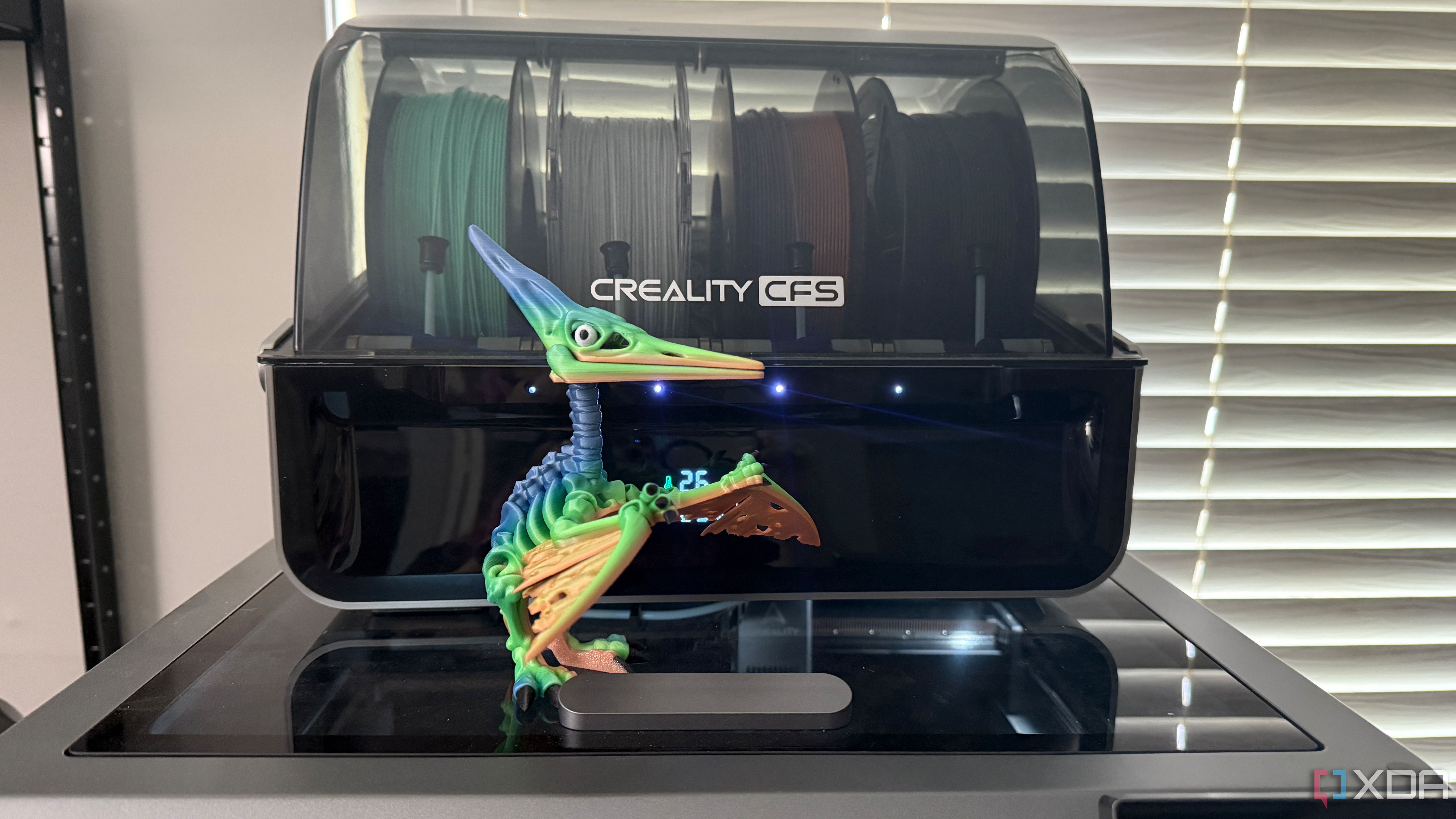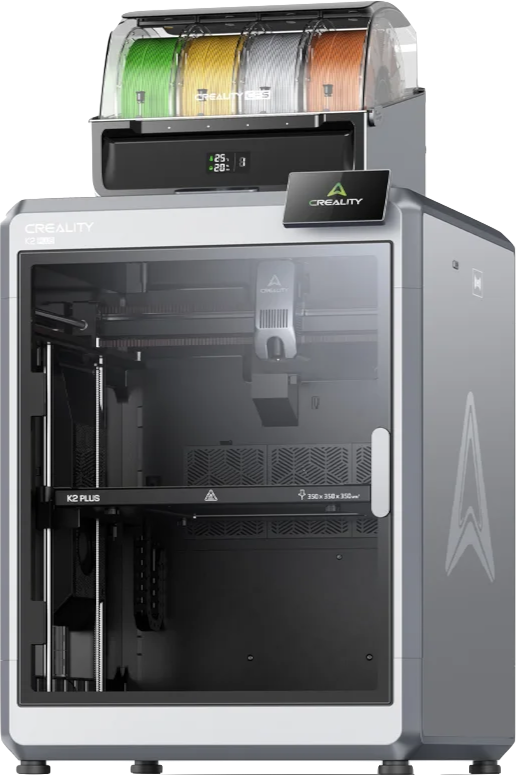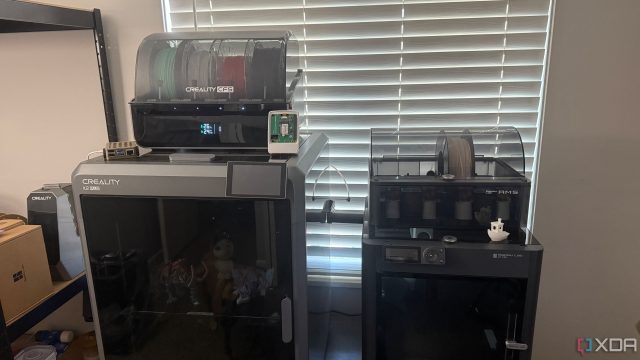Summary
- CoreXY printers offer faster speeds and cleaner results with a belt-driven motion system.
- Print quality significantly improves due to a stable frame, resulting in smoother surfaces and cleaner corners.
- Maintenance and tuning are easier with CoreXY systems due to fewer moving parts, consistent bed leveling, and better cable management.
When I first got into 3D printing, I stuck with the popular options — basic Cartesian-style printers with beds that moved on the Y-axis. Bed-slingers, we call them, because the bed moves back and forth instead of the extruder. These are accessible, affordable, and have huge online communities. But after too many hours spent tweaking, upgrading, and troubleshooting my print projects, I wondered if there was a better alternative. That’s when I decided to try a CoreXY printer.
It didn’t take long before I realized this wasn’t just a minor upgrade. CoreXY completely changed how I approached 3D printing. From faster speeds to cleaner results, I still wonder why I didn’t make the jump sooner. If you’re on the fence, here’s why I won’t go back.

Related
Sometimes I run out of ideas; here are 7 ways I find new 3D printing projects
We all hit creative blocks sometimes, but there are plenty of places to look for inspiration for your next 3D printing project
Speed and motion control made a difference
Faster prints without sacrificing precision
One of the first things I noticed was how much faster I could print with a CoreXY setup. Unlike a traditional bed-slinger, CoreXY systems keep the print bed stationary on the X and Y axes, only moving vertically. The print head flies across the build plate thanks to a more efficient belt-driven motion system. That translates to high-speed printing with smoother directional changes.
But speed isn’t the only perk. CoreXY’s movement mechanics mean less shaking and inertia, especially during fast infill or sharp corners. At higher speeds, I’d start seeing layer shifts or ghosting on my older printers. With CoreXY, I can push print speeds to 600mm/s without losing detail. That alone made complex projects feel way less tedious.
For functional parts or bulk batches, this change has been a game-changer. Whether I’m running PETG brackets or multi-part assemblies, the extra throughput means less time watching the progress bar crawl, and more time building.
Stable frame, smoother surfaces, cleaner corners
Even if I weren’t printing faster, the jump in quality would’ve been enough to justify the switch. CoreXY printers utilize a rigid, often enclosed frame, typically made of metal, which results in significantly fewer mechanical inconsistencies. This makes a noticeable difference in things like wall smoothness, overhangs, and how cleanly corners are rendered.
On a Cartesian bed-slinger, the moving bed can cause issues with tall prints or prints with fine detail. Vibrations from the bed’s movement sometimes introduce z-wobble or micro distortions. With CoreXY, that problem is nearly eliminated. The bed’s only job is to raise or lower with each layer, and that added stability helps every layer stack more precisely.
I’ve also had better luck with prints involving narrow walls or intricate geometries. My calibration cube tests now come out nearly perfect at high speeds, and I’m no longer fighting retraction settings or ghosting nearly as much as I used to.
Maintenance and tuning are less of a chore
Fewer moving parts, fewer mechanical headaches
At first glance, CoreXY systems can look complicated because of the belt layout. But in practice, they’re easier to maintain long term. There are fewer heavy moving parts and fewer stress points on the printer. The motion system is neatly contained, and belts wear down more slowly when properly tensioned.
Bed leveling has also been much more consistent. With an auto-leveling sensor and a solid bed that doesn’t shift during printing, I can go weeks without re-adjusting anything. Compare that to my older printers, where I’d be leveling the bed after almost every three or four prints. The time saved adds up.
CoreXY also encourages better cable management, cleaner toolhead designs, and modular upgrades. It’s a cinch to add things like a toolhead breakout board, quick-change nozzle system, or a stealthy LED lighting — all without worrying about tangled wires getting snagged by a moving bed.
What you’ll need to make the switch
Getting started with CoreXY doesn’t have to be hard
If you’re considering moving to CoreXY, you’ve got options. There are several great kits and preassembled models that lower the barrier to entry. Look at printers like the Bambu Lab X1C, Prusa XL (when available), or Voron kits if you’re into DIY. Even budget-friendly options like the Creality K1C or Elegoo Centauri Carbon can introduce you to CoreXY on a tighter budget.

Here’s what you’ll need to consider if you’re ready to switch:
- Budget for upgrades or enclosure: Many CoreXY setups benefit from enclosures, especially for ABS or ASA printing.
- Proper calibration tools: Make sure you’ve got gauges or software ready for precise belt tensioning.
- Room for a different footprint: CoreXY printers often have taller frames or unique shapes. Measure your space.
- Spare belts and idlers: You won’t need them often, but they’re specific to your frame design and valuable to have.
- Willingness to learn: If you’re coming from a plug-and-play experience, the learning curve may feel steep at first.
Most of the setup time is front-loaded. Once your belts are properly tensioned and your gantry is squared, the printer stays dialed in much longer than a Cartesian design.
Why I’ll stick with CoreXY
There’s no denying that CoreXY has its learning curves, especially when it comes to belt tuning and initial setup. But the payoff is worth it. I spend less time troubleshooting and more time printing. My prints are faster, cleaner, and more reliable. And I don’t miss chasing bed leveling issues or dealing with a wobbly print bed.
CoreXY offers a balanced blend of speed, stability, and print quality, whether you’re printing cosplay props, functional parts, or precision models. Switching to a CoreXY printer wasn’t just an upgrade — it was the reset I didn’t know I needed. And now that I’ve made the leap, I’m not looking back.












